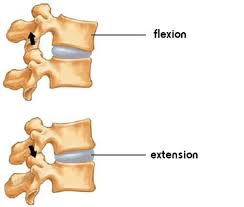« I bend so i don’t break » se trouve être une phrase que je retrouve régulièrement sur Instagram, où je m’amuse un peu avec les #yogachallenge.
Avant, la pratique des flexions arrières ne m’était pas du tout familière, et je pensais que seules les flexions avant pourraient faire du bien aux tensions dans mon dos… J’avais tout faux! À condition de les pratiquer en toute sécurité, les flexions arrières sont aussi excellentes pour la colonne vertébrale. Mais il ne faut pas se prendre pour un gymnaste de compétition et respecter la nature de son squelette: la flexion, même si elle n’est pas spectaculaire, sera quand même efficace en terme anatomique et énergétique!
Backbending practice wasn’t familiar to me, and i used to think that only forward folding was good for my back tensions… I was completely wrong! If you practice backbending safely, it will be really good for your spine! But you have to be careful: you are not a competitive gymnast, and you have to respect your bones… Even if not spectacular, each backbend is useful for your body and your energy!
La flexion arrière et la colonne vertébrale: comment ca marche?
Dans un article précédent consacré au yoga et à la colonne vertébrale, j’ai un peu expliqué l’anatomie de celle-ci. Voyons maintenant plus spécifiquement ce qui se passe dans les flexions arrières, c’est à dire dans le mouvement nommé « extension » dans l’image ci dessous.

Quand on fait une flexion arrière, la colonne se courbe du côté des épines dorsales. La seule limite réellement physiologique est donc lorsque celles-ci se touchent. Seules très peu de personnes ont les épines proches, et ne peuvent pas plier.
En réalité, chez la plupart d’entre nous, ce qui bloque dans la courbure du dos est d’un autre ordre. Au quotidien, nous ne courbons jamais le dos vers l’arrière, car la plupart des activités modernes, notamment le travail sur l’ordinateur, poussent à voûter le dos vers l’avant. Du coup, les ligaments et tendons de la colonne se raccourcissent et se raidissent du côté interne de la colonne, et quand on cherche à les tirer dans l’autre sens, comme c’est le cas lors des flexions arrières, ils renâclent…
Ce qui peut être dangereux, c’est que ce qui se passe en allant trop loin, c’est la même chose que quand on mange un burger: quand on mord et qu’on écrase un côté, tout ressort de l’autre côté… Il peut arriver la même chose aux disques intervertébraux, c’est pourquoi il faut rester prudent et ne pas aller trop loin non plus… (voir cet article en anglais à ce sujet: description assez amusante en fait!)

Vertus des flexions arrières
Les flexions arrière du yoga assouplissent donc la colonne vertébrale dans un sens que l’on n’utilise jamais, elles permettent alors de lutter contre certaines douleurs du dos (mais attention, cela ne se fera pas en forçant, bien au contraire, il faut y aller en douceur, sinon on peut se blesser gravement).
Elle ont aussi d’autres vertus: selon le blog « yoganice« , elles
« – Massent et oxygènent les viscères.
– Étirent les muscles abdominaux et augmentent la souplesse vertébrale.
– Tonifient les nerfs rachidiens et accroissent la vitalité dans tout l’organisme.
– Ouvrent la cage thoracique, donc améliorent la capacité respiratoire.
– Développent la confiance en soi et l’optimisme, permettent de s’ouvrir à la vie et d’affronter avec plus de joie les soucis. »
Pour MarieClaude Rivest, elles sont des anti-dépresseurs naturels. Elle vous propose une pratique ici. Tout en douceur!
Pour Céline Fayard, « On devrait pratiquer régulièrement des flexions arrière, évidemment toujours en choisissant des postures adaptées à son niveau et à ses capacités ». Allez voir son super article ici.
Dangers des flexions arrières
En effet, les flexions arrière sont difficiles et peuvent entraîner des lésions graves. Tout ce qui touche au dos de manière générale reste dangereux, car notre colonne renferme de très nombreux nerfs et notre moelle épinière. Il ne faut pas donc jouer avec le feu, et pratiquer le yoga de manière sécurisée.
Clémentine, du blog 3h48minutes que j’adore, nous ici de très bons conseils pour éviter les blessures.
Globalement, pour préserver sa colonne dans le travail des flexions arrières, il faut:
- connaître l’état de son dos: en fonction de l’âge, des activités, des douleurs éventuelles, et des problèmes médicaux que l’on peut avoir
- travailler des postures adaptées à son niveau. Si on est débutant, on courbe peu le dos (le sphinx, par exemple, n’est pas dangereux, et il ouvre déjà bien la poitrine et le chakra du cœur).
- travailler de façon encadrée, dans un cours avec un prof en qui on a confiance, et qui fait attention à vous.
- Penser à protéger ses lombaires en pratiquant mulabandha et en poussant le pubis et le coccyx vers l’avant au lieu de cambrer (pour cela, j’ai trouvé ce super article, en anglais par contre…)
Voilà, moi, je suis en train de devenir fan des flexions arrières, qui sont finalement encore plus efficaces pour mes tensions musculaires dorsales que les flexions avant…
Et vous, quelle est votre pratique des flexions arrières? Avez-vous des conseils? Ca m’intéresse énormément!!
English version
Backbending and vertebral spine: how does it works?
In a previous article dedicated to the yoga and to the vertebral column, I explained quickly the anatomy of this one. Let us see now more specifically what takes place in the back flexions, that is the movement named « extension » in the image below.

When we make a back flexion, the column bends on the side of backbones. The only really physiological limit is thus when these contact. Only very few people have the close thorns, and cannot fold.
In reality, to most of us, what stops in the curvature of the back is of another order. On a daily basis, we never bend the back towards the back, because most of the modern activities, in particular the work on the computer, urge to bend the back forwards. As a result, ligaments and tendons of the column grow shorter and stiffen of the internal side of the column, and when we try to pull them the other way, as it is the case during the back flexions, they grumble…
There is a good description of what happens in this article, and can be dangerous. It’s like when eating a hamburger: everything that is in the bread goes out of it when you press on one side… Your vertabral disk may go out of your « bones sandwich » too, but when practicing safely, it should just move and come back in its firts place!!

Virtues of backbends
The backbends in yoga thus soften the vertebral column in a direction which we never use, they allow then to fight against certain pains of the back (but be careful, it is necessary to go there smoothly, otherwise you can injure yourself seriously).
It also has other virtues: according to the blog » yoganice » (french article), they:
» – massage and oxygenate viscera.
– Stretch the abdominal muscles and increase the vertebral flexibility.
– Tone up rachidian nerves and increase the vitality in all the body.
– Open the rib cage, thus improve the vital capacity.
– Develop the self-confidence and the optimism, allow to open to the life and to face your problems with joy. «
In this article, you can also find other virtues of backbending: « backbends offer an exciting way to move the spine. This creates better balance between our normal activities and breaks-up the rigidity of the spine. (…) backbends stretch the heart, they relieve tensions stored in the muscles and help send off natural pain-killers. They may also cure depression and boost the immune system. »
Dangers of backbending
Indeed, the backbends are difficult and can pull grave hurts. All which touches the back in a general way remains dangerous, because our column contains very numerous nerves and our spinal cord. You should not thus play with fire, and to practise the yoga in a secure way.
You can find here an interesting article about injuring in yoga, i may post something summing it up and discussing about this in a few days!
For the backbending specific problems, here is and extract of this article on Livestrong blog:
« Placing the spine in an arched position can lead to compressed discs or spondylolysis. Spondylolysis is when you have a defect or fracture in one of the vertebras. According to Stanford Hospital and Clinics, spondylolysis is sometimes attributed to continuously performing hyperextension movements because it weakens the spinal restraining structures. Symptoms include lower back pain, discomfort that radiates down your legs and a feeling that your hamstrings are extremely tight.
Globally, to protect your spine when working on backbends, it is necessary to:
· know the state of yourback: according to the age, the activities, the possible pains, and the medical problems which you can have
· work postures adapted to your level. If you are novice, you work a little backbend (the sphinx pose, for example, is not dangerous, and it opens already well the breast and the chakra of the heart).
· work in a framed way, in a course with a teacher. whom you trust, and who pays attention to you.
· think of protecting your lumbar vertebrae by having a practice of mulabandha and by pushing the pelvis and the tailbone forwards instead of bending (like presented here)
Here we are! I am becoming a fan of backbending, which are finally even more effective for my dorsal muscular tensions than the forward folds… But, i’m also really careful, cause my aim is not gymnastics, but just a better health for my spine!
And you, what is your practice of backbends? would you like to share advices? It would be great to exchange about this!!


Bonsoir,
Si j’ai bien tout saisi…. C’est peu recommandé pour les personnes présentant des troubles dorso-lombaires de types : Hernie discale, discopathie lombaire, etc…
J’aimeJ’aime
Celles qui plient fortement, oui, mais celles qui sont soft sont au contraire très bonnes! Exemple le sphinx ou le cobra faits doucement sont excellents…
J’aimeAimé par 1 personne
Merci pour ta réponse Adeline.
J’aimeJ’aime
Je ferai peut être un petit post spécial pour savoir lesquelles on peut faire quand on a des vrais problèmes de dos!!!
J’aimeAimé par 1 personne
C’est une très bonne idée.
Je t’en remercie à l’avance.
J’aimeAimé par 1 personne